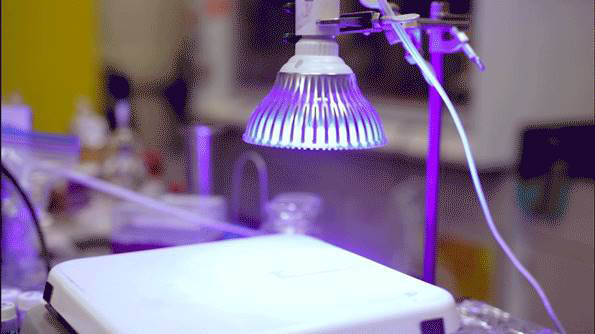(Image and text courtesy of MIT)
Researchers at the Massachusetts Institute of Technology have found a way to prevent wax-based PCMs from releasing their stored heat until triggered by light. MIT’s Professor Jeffrey Grossman stated that “the trouble with thermal energy is, it’s hard to hold onto it,” So his team developed what are essentially add-ons for traditional phase change materials, or, “little molecules that undergo a structural change when light shines on them.” The trick was to find a way to integrate these molecules with conventional PCM materials to release the stored energy as heat, on demand. “There are so many applications where it would be useful to store thermal energy in a way lets you trigger it when needed,” he says.
The researchers accomplished this by combining the fatty acids with an organic compound that responds to a pulse of light. With this arrangement, the light-sensitive component alters the thermal properties of the other component, which stores and releases its energy. The hybrid material melts when heated, and after being exposed to ultraviolet light, it stays melted even when cooled back down. Next, when triggered by another pulse of light, the material resolidifies and gives back the thermal phase-change energy.
“By integrating a light-activated molecule into the traditional picture of latent heat, we add a new kind of control knob for properties such as melting, solidification, and supercooling,” says Grossman, who is the Morton and Claire Goulder and Family Professor in Environmental Systems as well as professor of materials science and engineering. Currently they can delay the release of the stored heat for up to ten hours and provide a degree of supercooling of around 10oC. They hope to improve on this as the project develops. More details can be found at http://news.mit.edu/2017/new-way-store-thermal-energy-1117 and https://www.nature.com/articles/s41467-017-01608-y.




